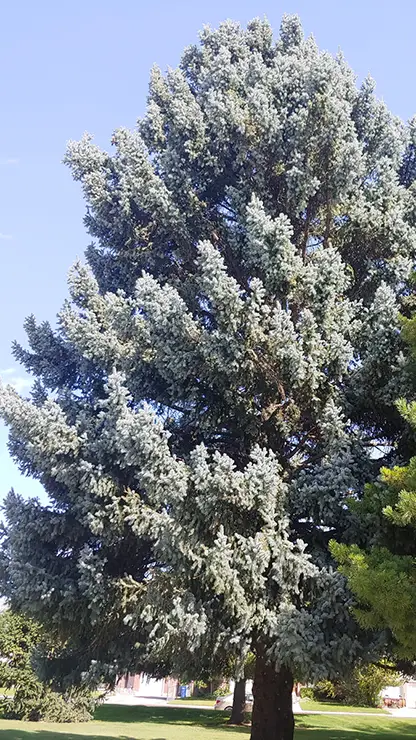

Blue Spruce
Picea pungens Engelm.
Blue Spruce
Picea pungens Engelm.
“Blue Spruce can live up to 600 years.”– Fun Facts
 Blue Spruce tree (Good, 2024a)
Blue Spruce tree (Good, 2024a)


Summary
Taxonomy
(How things are grouped and categorized based on shared traits.)- Kingdom: Plantae
- -Phylum: Streptophyta
- –Class: Equisetopsida
- —Subclass: Pinidae
- —-Order: Pinales
- —–Family: Pinaceae
- ——Genus: Picea
- ——-Species: pungens
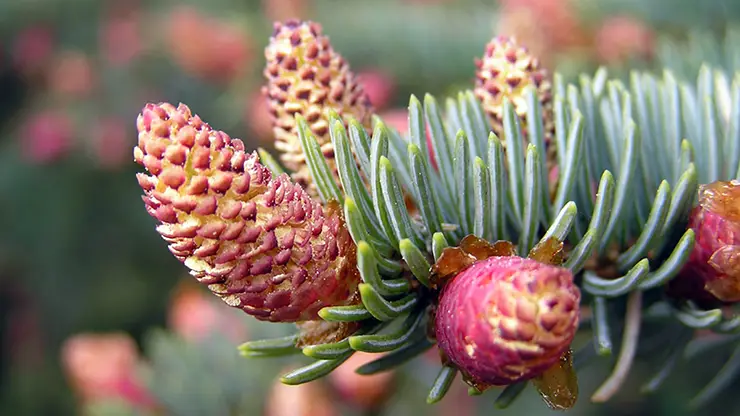
Taxonomic History:
Picea pungens was first published by Engelmann in 1879. A large number of synonyms exist for the species, the majority of which were published between the 1880s and 1920s. Despite this, there are no accepted subspecies of Blue Spruce (POWO, 2024).
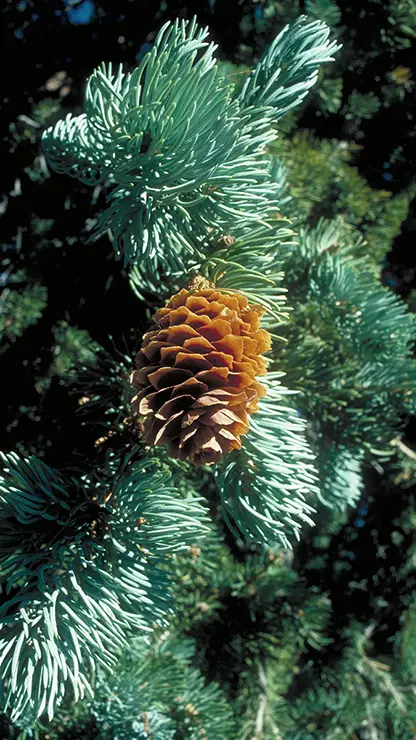
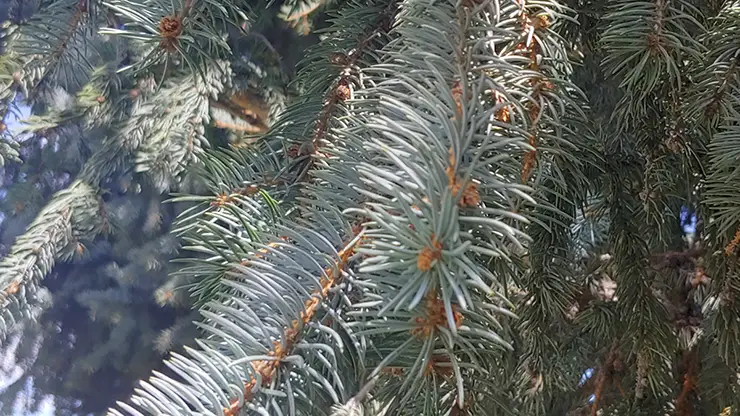

Identification Tips
Blue Spruce typically has sharp, tough needles. They are often angled nearly 90 degrees directly out of the branches. This contrasts with another species whose range overlaps with the Blue Spruce: the Engelmann Spruce (Picea engelmannii). Engelmann Spruce usually holds its needles at a softer angle, allowing an observer to grab a needle-covered branch without being pricked excessively (Aon, 2024). Additionally, Blue Spruce typically has longer female cones, 2.5-5 inches long compared to engelmannii’s 1.25-2.25 inches long (Welsh et al., 2015).

Fun Fact!
Blue Spruce is the most drought tolerant spruce in the world and can withstand extreme cold; up to -40 degrees (Celsius and Fahrenheit) (Goor and Barney, 1976).

Fun Fact!
Blue Spruce can live up to 600 years (Pavek, 1993).
Native Range:
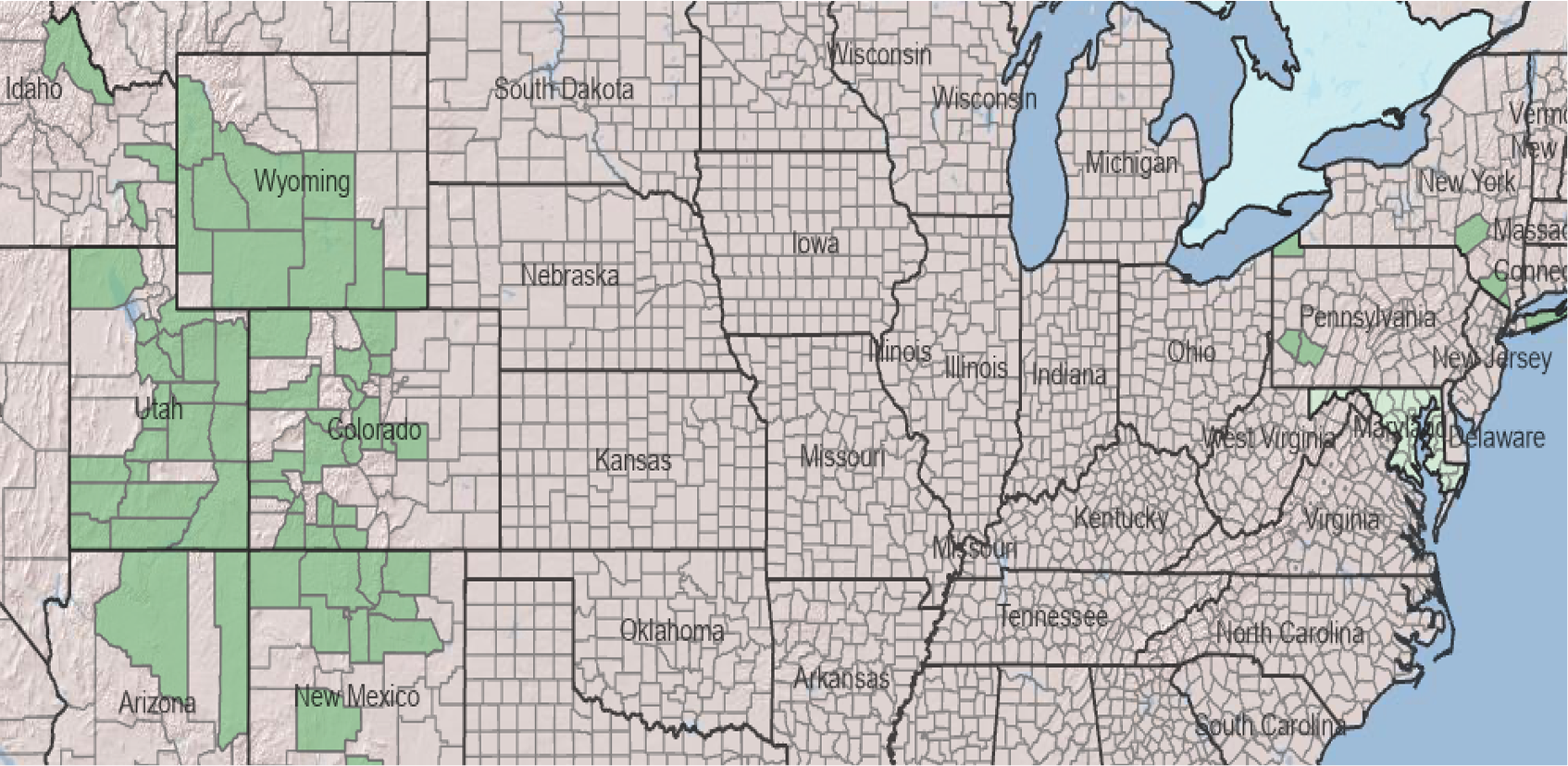

Native

Introduced
Plant Ecology/Habitat
Blue Spruce grows in cool, humid environments. It’s typically found in montane forests from 6000 – 9400 ft in elevation in association with other evergreen trees. It usually isn’t a dominant species and is often restricted to waterside habitats due to its shallow roots (Pavek, 1993; Welsh et al. 2015).

Economic or Ethnobotanical Uses
- The Keres Native Americans of the modern four-corners region used an infusion of needles to treat colds, and it was involved in ceremony (Swank, 1932).
- Blue Spruce is used extensively in the horticulture industry for its striking color and form and often used as a Christmas tree.
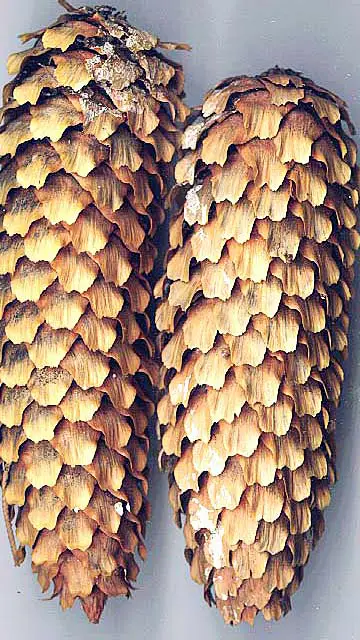

Conservation Status
Blue Spruce is ranked “Secure” overall (NatureServe Explorer 2.0, 2024).
Additional Resources

References

- Aon, O. (2024). Spruce trees: Foraging and identification. Forage Colorado. https://www.foragecolorado.com/post/spruce-trees-foraging-and-identification
- Beentree (2006). Picea pungens male cones. [Photograph]. NC State Extension. https://plants.ces.ncsu.edu/plants/picea-pungens/
- Gmihail (2015). Picea pungens cones. [Photograph]. Wikimedia. https://commons.wikimedia.org/wiki/File:Picea_pungens_cones.jpg
- Good, W. (2024a). Blue Spruce tree. [Photograph]. Orem City Center Park, Orem, UT.
- Good, W. (2024b). Blue Spruce branch. [Photograph]. Orem City Center Park, Orem, UT.
- Goor, A.Y., & Barney, C.W. (1976). Forest tree planting in arid zones. Ronald Press, New York. 504 p.
- NatureServe. (2024). NatureServe Network Biodiversity Conservation Status Data accessed through NatureServe Explorer [web application]. NatureServe, Arlington, Virginia. https://explorer.natureserve.org/
- Pavek, D.S. (1993). Picea pungens. Fire Effects Information System (FEIS). https://www.fs.usda.gov/database/feis/plants/tree/picpun/all.html
- POWO (2024). “Plants of the World Online”. Facilitated by the Royal Botanic Gardens, Kew. http://www.plantsoftheworldonline.org/
- Powell, D. (2007). Picea engelmannii. [Photograph]. Wikimedia Commons. https://commons.wikimedia.org/wiki/File:Picea_engelmannii_UGA2.jpg
- St. John, J. (2018). Picea pungens (dwarf Colorado blue spruce). [Photograph]. Flickr. https://www.flickr.com/photos/jsjgeology/25552748468
- Swank, G.R. (1932). The ethnobotany of the Acoma and Laguna Indians. Masters Thesis. University of New Mexico.
- USDA (2024). Distribution of Picea pungens. USDA-NRCS-NGCE & NPDT. https://plants.usda.gov/plant-profile/PIPU
- Welsh, S.L., Atwood, N.D., Goodrich, S., and Higgins, L.C. (2015). A Utah Flora, 5th Edition. Brigham Young University Press, Provo, UT.
